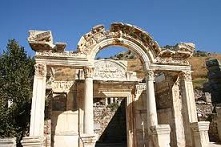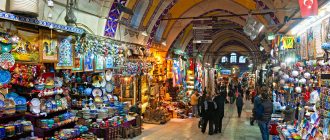Want to visit the Temple of Serapis Ephesus Turkey? Read ahead for background on the Temple of Serapis Ephesus Turkey…
The ancient heritage site known as the Temple of Serapis is located in the town of Ephesus Turkey. It was built to commemorate the Egyptian merchants who frequented this area in third century BC during the Hellenistic Period.
It is located on the entrance of the western gate of the Commercial Agora and there is another entrance into the Temple of Serapis from the southwestern side of the Commercial Agora which is accessed through the stairs created for this purpose.
History of the Town of Ephesus
Legend has it that the town of Ephesus in Turkey was established by the legendary female warriors called the Amazons and is considered the city of the Mother Goddess.
This town has been functional and inhabited from the end of the Bronze Age and its location has changed periodically according to its history and requirements.
Over time it became one of the most important trade ports by the year 281 BC and was used by both the Egyptians as well as the Romans to its maximum advantage.
Temple of Serapis in Ephesus Turkey
Archaeologists believe that the Temple of Serapis hailing from the second century was never completed. It was built to commemorate one of the Egyptian gods of that time and is a testimony to the lively environment of those times where by an Egyptian temple was constructed in the commercial center of a Turkish town.
The statue inside has been constructed of Egyptian granite of fine quality and there are many inscriptions inside the temple which tell a tale commemorating its construction for a particular Egyptian god.
The construction is similar to the Corinthian style with many columns constructed out of fine marble and granite. The main gate slides open on rollers and an iron gate leads towards the statue of Serapis.
The god is believed to be Serapis and in fact another statue of the god along with the leading goddess of Ephesians who was known as Artemis is found in the museum where both are carrying a garland symbolizing peace and prosperity.
The reason for this mingling of Turkish and ancient Egyptian culture was basically because the town had strong commercial bonds with the port city of Alexandria in Egypt. Since Egypt was the largest producer of wheat during ancient times there was constant trading of wheat in exchange for the commercial products from the town of Ephesus.
Since Turkey has been influenced by many cultures the Temple of Serapis in Ephesus Turkey was later converted to a church by the Christian evangelists and you can still see the remains of baptistery on the eastern side of the Temple.
The Structure of the Commercial Agora
Since the city of Ephesus in Turkey was a commercial trade center during the third century the Commercial Agora was built to facilitate trade activities. However, the ruins have been dated back to the time of the rule of Caracalla which falls between 211 to 217 C.E.
The Agora structure is surrounded completely by columns and runs the length of hundred 110 m on each of its four sides. It has three gates which allow access to the center.





